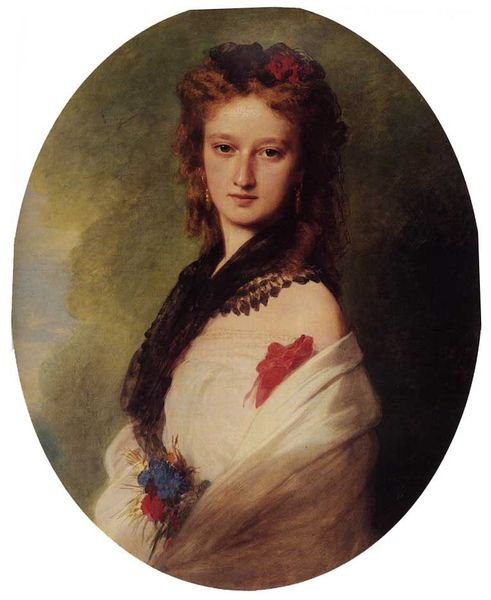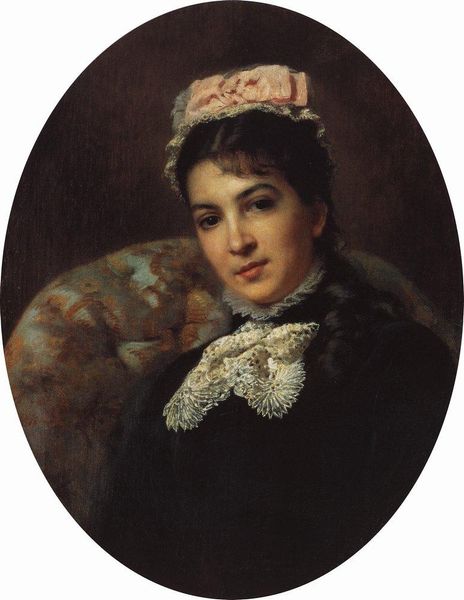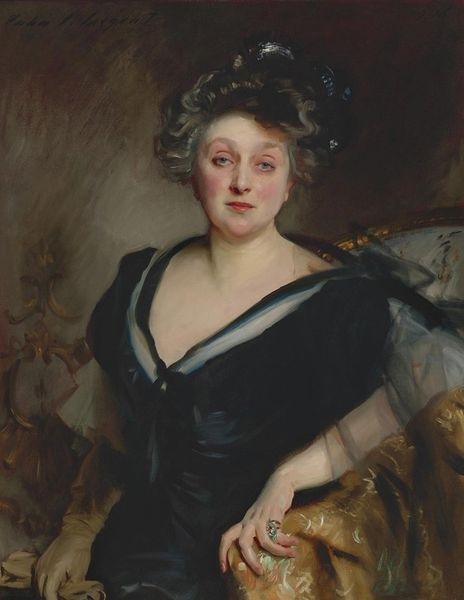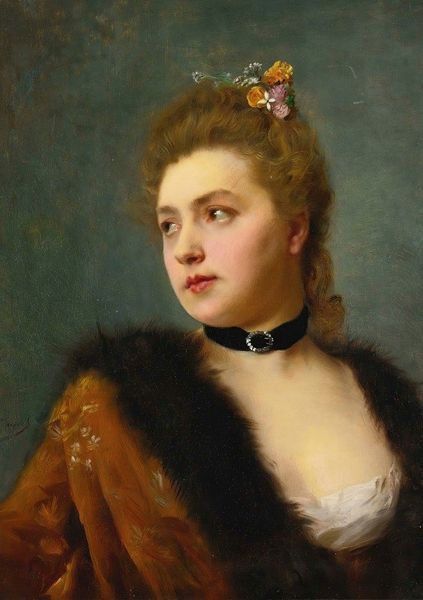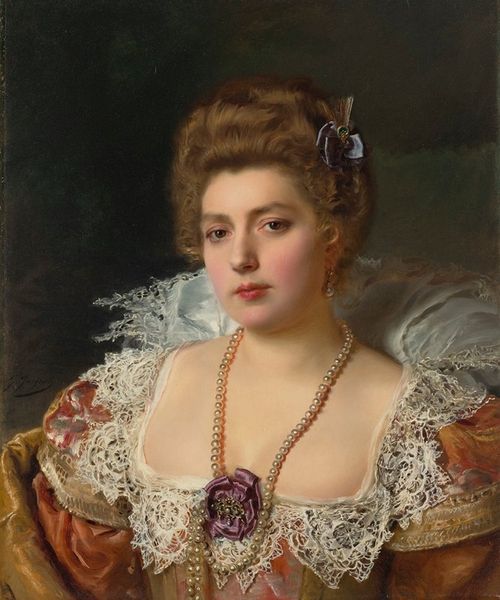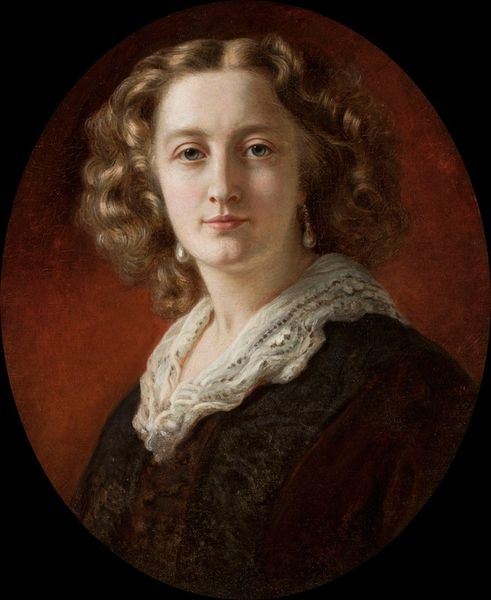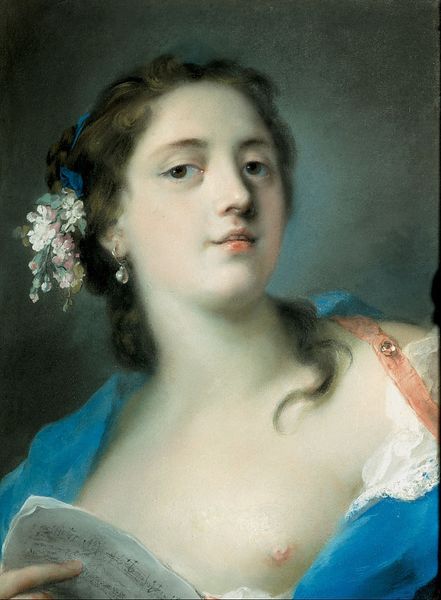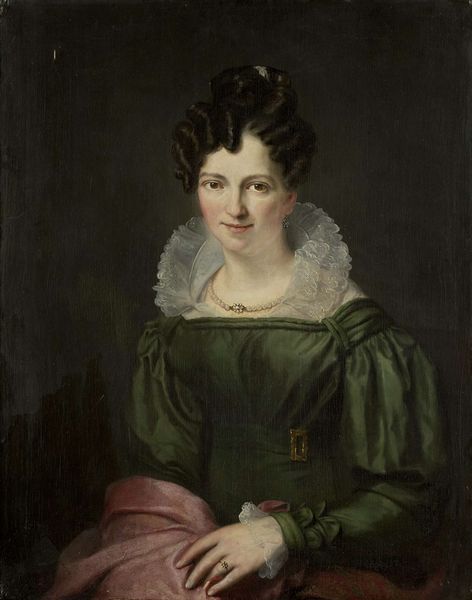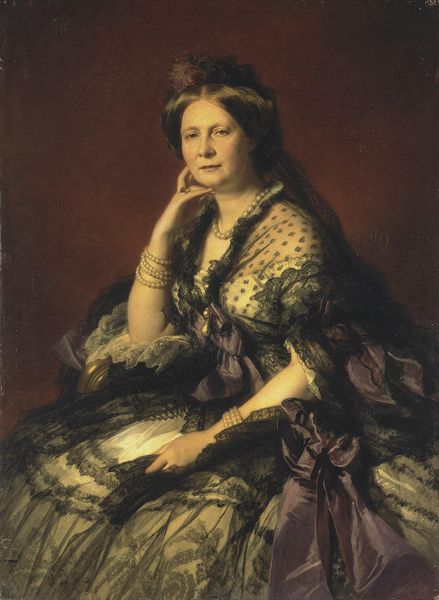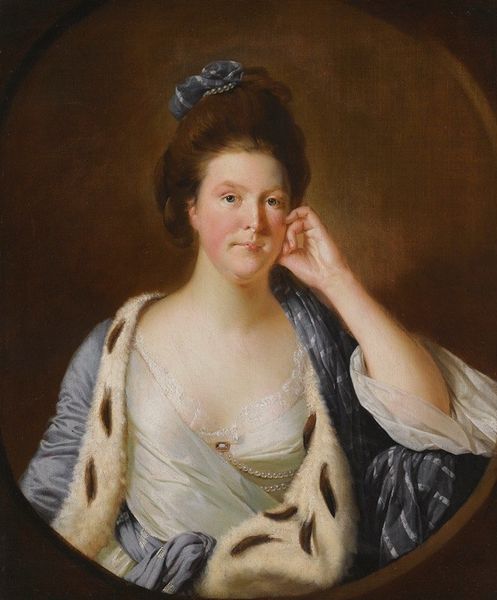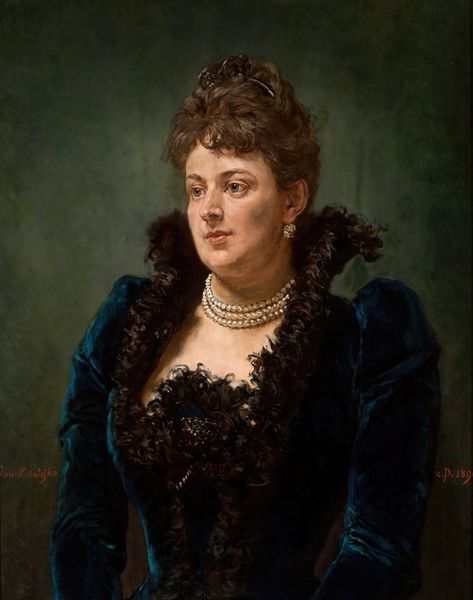
Copyright: Public domain
Curator: Here we have Franz Xaver Winterhalter’s "Portrait of a Lady," painted in 1872. It’s a fascinating example of his portraiture from that late period in his career. Editor: The first thing that strikes me is how it manages to feel both incredibly intimate and somewhat distant. The woman's gaze is direct, but her expression is rather closed off. Curator: That's interesting because Winterhalter was widely sought after for his ability to idealize his subjects while still capturing a likeness. Think of the various European royal houses for which he worked, turning queens and princesses into near goddesses, thereby consolidating power through beauty. Here, it seems the goal may be different. Editor: Absolutely. It's this tension, this delicate dance between revealing and concealing that I find intriguing. The dark lace she's wearing feels almost like a veil. What is being covered? Is there an element of mourning, of societal constraint even as we view a clear status display through expensive clothes and jewelry? Curator: Indeed. Consider the political climate of the time. This portrait comes after significant upheavals in Europe. There is something of the ancien regime holding on tight even in the face of change. The brushwork too is looser than some of his earlier, crisper society portraits, leaning further towards Romanticism perhaps. We’re meant to glean an emotional essence through aesthetic feeling rather than a precise record of surface detail. Editor: I agree. And it draws our attention to the power dynamics embedded within the portrait. Her identity is subsumed, almost generic, with the nameless "Lady." It speaks volumes about the limited agency afforded to women of the upper class, framed and confined by their social roles, and how class determines gender expression, thereby restricting our perception. Curator: Right, while she benefits materially from that class position, she simultaneously sacrifices her public individuality for the continuation of that social order. It's quite cleverly rendered in a portrait that appears on first glance to be straightforward and decorative. Editor: Precisely. These subtle nuances offer fertile ground for dialogue between past and present perceptions of class, gender, and representation, challenging the accepted status quo even as it replicates the visual norms. I love how it holds so many threads that lead us into examining these themes even today. Curator: I concur. This seemingly straightforward portrait gives us so much to unpack.
Comments
No comments
Be the first to comment and join the conversation on the ultimate creative platform.
